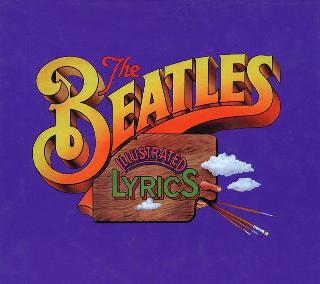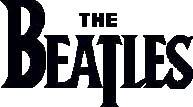Index
Home
Vorige
Another Girl
Composer(s) : Lennon and McCartney
Year : 1965
Chords/Tabs: Another Girl
Notes on "Another Girl" (AG)
KEY A Major
METER 4/4
FORM Intro -> Verse -> Verse -> Bridge -> Verse ->
Bridge -> Verse -> Outro
GENERAL POINTS OF INTEREST
Style and Form
- If you make the effort to get beyond the pedestrian lyrics and
the by-today's-standards embarrassing visual background given
this song in the _Help!_ film (Paul out on a beach holding a woman
sideways and 'playing' her like some kind of anthropomorphic bass
guitar -- or do I misremember it ?), you find here a song that is
a veritable cross-section of the tricks and trademarks of the Beatles
to this point of their career.
- We also find in this song yet another example of John's cross-influence
on Paul. Though the influence in this case is not as obvious on the
surface of things as it is in the case of, say,
"Paperback Writer" and "Rain",
the parallels between "Another Girl" and
"You're Going To Lose That Girl" (YGTLTG)
are as striking as they are surprising, once they've been pointed out to you.
- The form sounds subtly more unusual than it actually is because of the
extremely refrain-like final phrase of the verse section. The last time
we had seen this effect, way back in this series
YGTLTG and "It Won't Be Long" (IWBL), it had thrown us off guard quite a bit. Once you
parse this phrase as part of the verse proper, the form suddenly reveals
itself as one of the standard forms, with two-verses, two-bridges, and
only one verse intervening. The use of such a pseudo-refrain, though,
especially when it also appears as the song's introductory section,
does have a unique the power to, if not outright confuse, make a
formalistically fluid impression.
Melody and Harmony
- The melody makes prominent thematic use of downward chromatic
scale fragments and a certain amount of noodling around the same
few notes in a constricted pitch range; *both* Beatles trademarks.
- Although the song is hardly a 12-bar blues ditty in terms of chords,
tune, or phrasing, the melodical stress on the flat 3rd (C natural)
and flat 7th (G natural) scale degrees projects bluesy feel overall.
- The verses rely entirely on I, IV, V, and the flat-VII deployed simply
as a neighboring chord between two instances of I. The bridge, though,
features an unusual (in context of the Beatles) full-blown modulation
to the key of C Major whose relationship to the home key is that of
"relative Major of the parallel minor"; the latter being one of this
songs principal and unmistakable connections with YGTLTG.
- The emphasis on the melodic flat 3rd is sufficiently stronger than
average here to create a Major/minor ambiguity regarding the mode of
the home key that is somewhat reminiscent of "I'll Be Back." The effect
is especially noticeable where the music returns to A Major at the end
of the bridge, and makes you wonder in retrospect if, in the verses,
it really was only the melody and not the chords too performed in the
minor mode; what do the chord books say there ? Is the first
chord A Major or minor ?
Arrangement
- Paul is double tracked on the lead vocal with the familiar
italicizing effect of the backing voices joining him on the
recurring title phrase.
- George supplies notable guitar fills, the frequency and raucousness
of which both increase over the course of the song.
SECTION-BY-SECTION WALKTHROUGH
Intro
- The song opens vocally with absolutely no instrumental cue, yet
another affinity with John's YGTLTG and
IWBL.
- The intro turns out to anticipate the final phrase of the verse section.
It's a phrase whose length comes out to be closer to five than four
measures; at the very least, it ends on the downbeat of the fifth
measure. A side effect of this peculiarity is that the phrase tends
to suggest an ellision or overlap with the beginning of whatever follows
it whenever it appears:
|Verse -->
|A |D |A |D |A ...
A: I IV I IV I
Verse
- The sixteen measure verse has a phrasing pattern of AABC and sounds
almost like a non-traditional 12-bar form plus short refrain:
------------------------------- 2X ------------------------------
|A |G |A |D |
I flat-VII I IV
|D |- |- |E |
IV V
|A |D |A |D |
I IV I IV
- The IV chord which gets sustained through four measures that *don't*
exactly coincide with where the phrase divisions lie provides a good
example of how harmonic rhythm can be used to strong, albeit subliminal
effect.
Bridge
- This eight-measure section sounds as though entered as an ellided,
directed extension of the 'refrain':
|C |G |C |G |C |E |A |E |
I V I V I
a:III V I V
(surprise!)
- The music briefly modulates to the key of C Major before it pivots
back to A. The pivot in this case relies on tricking you into
expecting a return to a minor with the A Major chord then coming
as a surprise twist.
- The pivot *into* the modulation is interesting; forcing you, as a
listener to hear the final D chord in the preceding verse punning
itself as both IV in the home key as well as V-of-V in the new key,
the latter not being resolved until two measures into the bridge.
- As is so often the case, the bridge provides melodic contrast with the
verses in the way that the erstwhile noodling within a small range is
reaplaced here by an extended arch shape which supplies at its zenith
the unique melodic high point of the piece.
Outro
- The outro is a simple extension of the verse ending with the the
title phrase repeated a canonical three times.
- The trailing guitar lick at the very end is a novel touch that
helps unify the song overall from the way in which it carries
forward both the motif of the ubiquitous guitar fills and the
blusey undercurrent.
SOME FINAL THOUGHTS
- This song may be far from what you'd call one of Paul's career
highlights but you've got to admire his craftmanship here even if
the material itself is less than entirely distinguished.
- You may want to quibble with Paul from time to time over whether
or not you think he exerts a sufficiently discriminating filter
on the supply of new ideas and directions which pop into his head.
But in terms his facility in the developing of such ideas and his
seemingly casual and second-nature mastery of technique, you can
only be amazed; maybe :-)
Regards,
Alan (awp@bitstream.com *OR* uunet!huxley!awp)
---
"Give 'em a pull." 122292#72
---
Copyright (c) 1992 by Alan W. Pollack
All Rights Reserved
This article may be reproduced, retransmitted, redistributed and
otherwise propagated at will, provided that this notice remains
intact and in place.
Ook op Help!:
(c) 2024 Serge Girard


 (c) Alan Aldrigde, The Beatles Illustrated Lyrics
(c) Alan Aldrigde, The Beatles Illustrated Lyrics